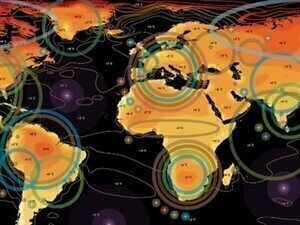Environmental Laboratory
Nanoparticle Measurement Expertise Aids Development of Water Pollution Tests
Jan 26 2015
LGC (UK) scientists have contributed to a European project to investigate the feasibility of developing water test materials to help measure toxic water pollutants at nanogram-per litre levels. These materials will be useful to the European-wide battle to improve the world’s water supplies.
As part of a project with other European National Measurement Institutes, three test materials have been successfully developed for the measurement of polycyclic aromatic hydrocarbons (PAHs), polybrominated diphenyl ethers (PBDEs) and tributyltin (TBT), which have all been identified as a critical pollutant under the EU Water Framework Directive (WFD) – an EU law introduced to target water pollution.
Under the WFD, all member states must improve the condition of their water supplies, drastically reducing the levels of major pollutants by 2015. Targets were introduced on 22 December 2000, with the aim of protecting, enhancing and restoring the condition of all water in the natural environment.
Despite these targets, the majority of water bodies in the UK and in other EU countries are failing to meet the required targets. Only 27% of rivers, streams, lakes, estuaries, coastal waters and groundwater in England are currently classified as being of ‘good status’ under the standards set down by the WFDi.
One of the major barriers is the lack of suitable measurement procedures to allow accurate determination of pollutants at the low levels that the Directive requires. In order to combat this, a feasibility study was launched under the European Metrology Research Programme (EMRP) for the preparation of reference materials for PAHs, PBDEs and TBT in natural waters.
PAHs are found in fossil fuels, such as oil and coal, and in tar deposits, and are generally produced when insufficient oxygen or other factors result in incomplete combustion of organic matter.
PBDEs can be found in many everyday household items such as upholstered furniture, mattresses and other synthetic home textiles with flame retardants, and TV or computer equipment containing plastic casings, cables and circuit boards. These items often end up in landfill where potentially harmful levels of PBDEs could leach into rivers.
TBT was used as a biocide in anti-fouling paint, commonly known as bottom paint, for decades, before being banned when it was discovered that TBT-derived leachates are highly toxic for marine organisms at all points of the food chain, including mammals.
LGC scientists contributed to the feasibility study by characterising reference material slurries for fine particulate matter with size below 450 nanometres (nm) and 200 nm. The work was performed with a field-flow fractionation (FFF) instrument coupled to variety of detectors.
Panayot Petrov, Science Leader in the Inorganic Analysis team within the Science and Innovation division at LGC said: “A requirement of the WFD is that whole, non-filtered waters have to be analysed. This is because suspended particulate matter (SPM) plays a key role in the transport and fate of organic pollutants in the aquatic environment. We used our expertise in nano-particle measurement to characterise the small particles (<450 nm) present in the samples. This provided necessary information about the nature of the model SPMs used.”
Three types of ready-to-use water test materials were successfully developed for PAHs, PBDEs and TBT at nanogram-per litre levels. Combining the humic acids with these model suspended particulate matter (SPM) materials represent a step forward in the production of test materials mimicking whole natural water as stipulated in the European Union Water Framework Directive.
The paper, ‘Novel concepts for preparation of reference materials as whole water samples for priority substances at nanogram-per-liter level using model suspended particulate matter and humic acids’, led by JRC-IRMM with LGC’s contribution has been published in the December issue of Analytical and Bioanalytical Chemistry.
Digital Edition
IET 34.2 March 2024
April 2024
Gas Detection - Biogas batch fermentation system for laboratory use with automatic gas analysis in real time Water/Wastewater - Upcycling sensors for sustainable nature management - Prist...
View all digital editions
Events
Apr 30 2024 Melbourne, Australia
Apr 30 2024 Birmingham, UK
May 03 2024 Seoul, South Korea
May 05 2024 Seville, Spain
May 06 2024 Minneapolis, MN, USA


















